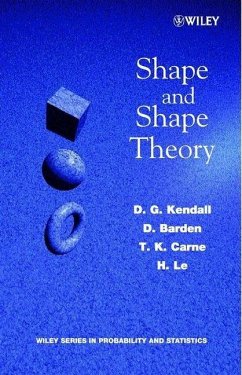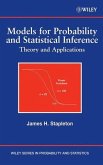Shape and Shape Theory D. G. Kendall Churchill College, University of Cambridge, UK D. Barden Girton College, University of Cambridge, UK T. K. Carne King's College, University of Cambridge, UK H. Le University of Nottingham, UK The statistical theory of shape is a relatively new topic and is generating a great deal of interest and comment by statisticians, engineers and computer scientists. Mathematically, 'shape' is the geometrical information required to describe an object when location, scale and rotational effects are removed. The theory was pioneered by Professor David Kendall to solve practical problems concerning shape. This text presents an elegant account of the theory of shape that has evolved from Kendall's work. Features include: * A comprehensive account of Kendall's shape spaces * A variety of topological and geometric invariants of these spaces * Emphasis on the mathematical aspects of shape analysis * Coverage of the mathematical issues for a wide range of applications The early chapters provide all the necessary background information, including the history and applications of shape theory. The authors then go on to analyse the topic, in brilliant detail, in a variety of different shape spaces. Kendall's own procedures for visualising distributions of shapes and shape processes are covered at length. Implications from other branches of mathematics are explored, along with more advanced applications, incorporating statistics and stochastic analysis. Applied statisticians, applied mathematicians, engineers and computer scientists working and researching in the fields of archaeology, astronomy, biology, geography and physical chemistry will find this book of great benefit. The theories presented are used today in a wide range of subjects from archaeology through to physics, and will provide fascinating reading to anyone engaged in such research. Visit our web page! http://www.wiley.com
Dieser Download kann aus rechtlichen Gründen nur mit Rechnungsadresse in A, B, BG, CY, CZ, D, DK, EW, E, FIN, F, GR, HR, H, IRL, I, LT, L, LR, M, NL, PL, P, R, S, SLO, SK ausgeliefert werden.
"This is a fascinating book mixing geometry, topology and probability theory..." (London Mathematical Society Bulletin, Vol 32, 2000) "The potential value that his volume should have to researchers in many areas for years to come." (Short Book Reviews, August 2000) "I would like to conclude this review by strongly recommending that geodists have this book on desk within ready reach of hands" (Journal of Geodesy, Vol. 75, 2001)









